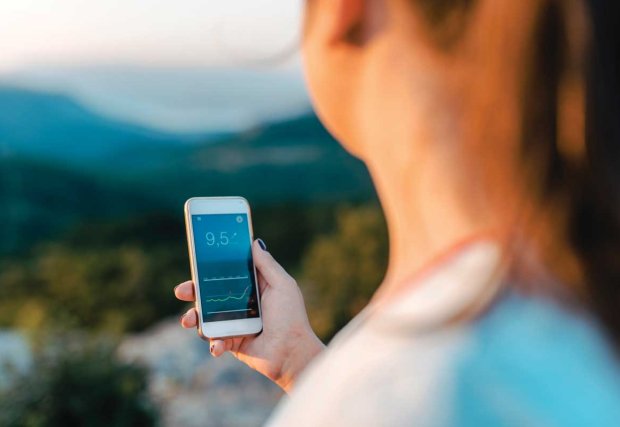Article submitted courtesy of Samim Enayat, MD, of Enayat Endocrinology & Metabolism
One of the common barriers to well-controlled diabetes is monitoring blood sugar levels. Checking blood sugars multiple times a day is a burden with which many patients with diabetes and their loved ones struggle. However, in order to dose insulin correctly, make medication adjustments and prevent dangerous hyper- or hypoglycemia, checking blood sugars is vital. Fortunately, the growth in diabetes technologies has transformed the lives of many diabetics, helping ease the physical and emotional impact the disease can have on diabetics and their loved ones.
Continuous glucose monitors, or CGMs, have made living with diabetes not only more convenient, but also safer. These small devices are worn for 1-2 weeks at a time and check blood sugars continuously without the need to prick fingers and draw blood. Connected wirelessly to a remote device or smartphone, CGMs transmit data in real time, enabling one to simply glance down at his or her phone or smartwatch to view blood sugar levels. One of the best features of CGMs is the ability to share the data. The CGM user can decide to share their blood sugar data with a parent, significant other or physician at any time.
The ability of a parent to monitor a diabetic child’s blood sugars in real time while that child is at school, playing sports, or asleep, provides an added sense of security for many families. I have patients who might be on vacation across the country and call my office to ask about their blood sugars. With CGMs, I can download their blood sugars at that moment and make the appropriate adjustments. As a clinician, the data I get from CGMs is miles ahead of what static blood sugar checks can tell me. It is the difference of seeing still photos versus watching a movie.
CGMs are also able to “talk” to insulin pumps, wirelessly, sending blood sugar data over to a patient’s insulin delivery device. The insulin pump can then adjust the insulin delivery doses in response to what the patient’s blood sugars are. CGMs and integrated pumps have not only made life more convenient for many diabetics, they have also been found to have measurable benefits. CGMs and integrated insulin pumps have been shown to increase the time a person’s blood sugars are in the “normal” range and have decreased the rates of hypoglycemia, or low blood sugars.
With rapidly advancing diabetes technology, it can be challenging for patients, loved ones and clinicians to keep track of what is available. However it is essential for all involved to be aware of new devices that are designed to improve quality of life, convenience and blood sugar control.
Did you know ...
Specialty diabetes care is provided at Desert Springs Hospital to help you stay healthy and on track with your wellness goals. Desert Springs Hospital’s Diabetes Treatment Center was the nation’s first inpatient diabetes program to earn The Joint Commission’s Certificate of Distinction for Advanced Inpatient Diabetes Care. Also, the outpatient diabetes program is recognized by the American Diabetes Association® and accredited by the American Association of Diabetes Educators. Services include the evaluation, treatment and ongoing education for adults with Type 1 or Type 2 diabetes. The interdisciplinary team, which includes certified diabetes educators and nurses, works closely with your primary care physician and offers comprehensive classes, individual appointments and free and discounted services to help you lead a longer, healthier life.

